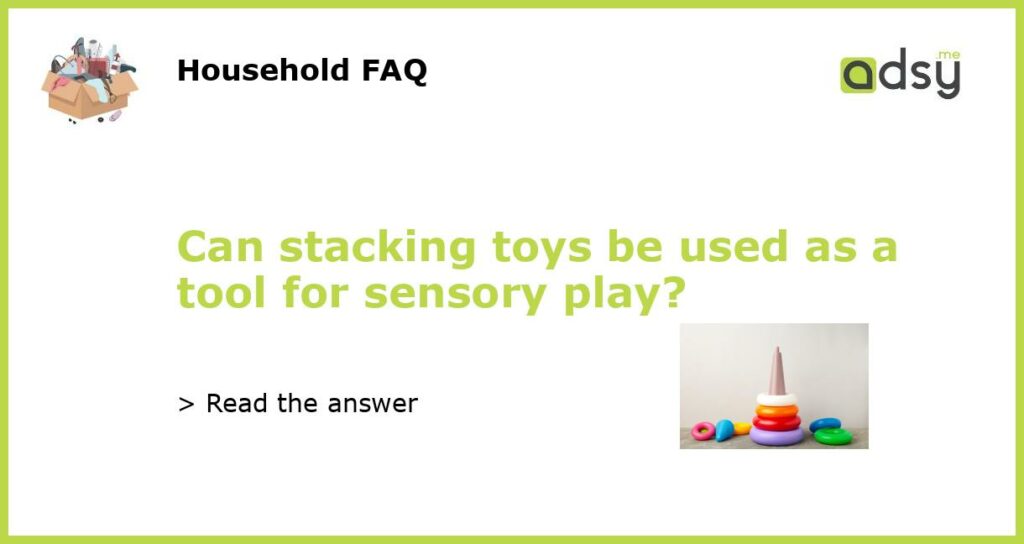Yes, stacking toys can be used as a tool for sensory play
Sensory play is an important aspect of child development, as it engages the senses and helps children explore and understand the world around them. Stacking toys are a versatile and effective tool for sensory play, as they offer tactile, visual, and motor experiences. From infants to preschool-aged children, stacking toys provide a range of sensory benefits. In this article, we will explore how stacking toys can be used as a tool for sensory play and the various ways they can engage children’s senses.
Tactile stimulation
One of the key sensory benefits of stacking toys is the tactile stimulation they provide. Stacking toys are typically made of different textures, materials, and shapes, allowing children to explore and experience a variety of tactile sensations. The smoothness of wooden blocks, the softness of foam cubes, or the bumpy texture of plastic rings all offer different tactile experiences for children to enjoy. By grasping, manipulating, and stacking these toys, children engage their sense of touch and develop their fine motor skills. They also learn about texture, weight, size, and shape as they experiment with different stacking combinations, providing a multi-sensory tactile experience.
Visual stimulation
In addition to tactile stimulation, stacking toys also offer visual stimulation. Stacking toys often come in vibrant colors or feature visually appealing patterns, stimulating children’s visual senses. By stacking toys, children can experiment with different color combinations, patterns, and sizes. They can create visually interesting structures and develop an understanding of spatial relationships. The visual element of stacking toys enhances children’s creativity and encourages them to explore different visual concepts. As they stack and build, children can observe their creations from different angles, helping to develop their visual perception and spatial awareness.
Motor skills development
Stacking toys are an excellent tool for promoting the development of fine and gross motor skills. Fine motor skills refer to the movements of the smaller muscles in the hands and fingers, while gross motor skills involve the larger muscle groups and whole-body movements. As children manipulate and stack these toys, they practice their hand-eye coordination, grasp, release, and balance. Stacking toys also encourage bilateral coordination, as children use both hands simultaneously for stacking or holding the base. These activities help children develop their hand and finger strength, dexterity, and coordination, which are essential for tasks such as writing, drawing, and grasping objects.
Cognitive development
Stacking toys go beyond sensory stimulation and motor skills development. They also promote cognitive development in children. Stacking toys offer endless possibilities for problem-solving, critical thinking, and concentration. As children stack and build, they learn about cause and effect, trial and error, and spatial awareness. They explore concepts such as balance, stability, and structure. They learn to plan and execute their stacking ideas, fostering their problem-solving skills. Stacking toys also provide opportunities for imaginative and pretend play, allowing children to use their creativity and develop their cognitive abilities.
Language and social development
Stacking toys are not only beneficial for individual play but also for language and social development. When children engage in stacking activities with others, they learn to communicate, cooperate, and negotiate ideas. Stacking toys provide a platform for conversations, as children discuss their stacking ideas, share their experiences, and seek assistance or feedback from others. This social interaction builds their language skills, vocabulary, and social-emotional development. Stacking toys also encourage turn-taking, sharing, and collaborative play, fostering important social skills in children.






